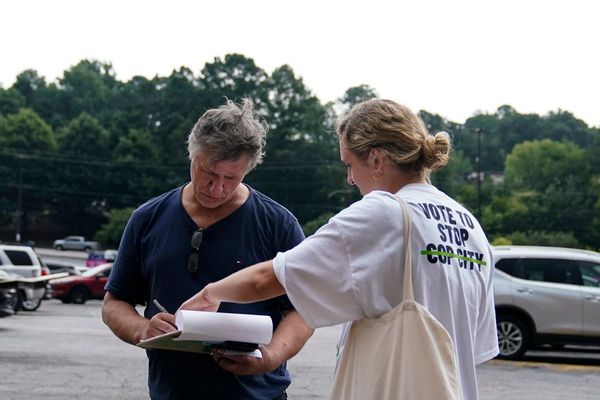
The number of patients with serious heart problems forced to wait more than 18 weeks for care has risen fivefold since Covid struck, with some so ill they may die as a consequence of long NHS delays.
More than 163,000 people in England are enduring long waits, some of them in such poor health that doctors fear they will have a heart attack, stroke or die prematurely. The figure was 86,540 in February 2022 and 32,186 in February 2020, according to a Guardian analysis.
The revelation, described as “alarming” by leading cardiologists, came as the total heart care waiting list grew for the third month in a row to 408,548, bucking the trend of overall NHS waiting lists declining slowly. The figure was 233,081 in February 2020.
The overall waiting list for routine hospital treatment in England has fallen for the fifth month in a row. An estimated 7.54 million treatments are waiting to be carried out – relating to 6.29 million patients – down slightly from 7.58 million treatments and 6.32 million patients a month ago.
Waiting lists for most areas of medicine with comparable data have grown since the pandemic, but not by as much as cardiology. General surgery is up 30% since February 2020, ophthalmology is up 38%, neurology 68% and urology 70%. The heart care waiting list is up 75%.
Dr Sonya Babu-Narayan, a consultant cardiologist and associate medical director at the British Heart Foundation, said: “It’s shocking to see that heart care waiting lists have risen for the third month in a row despite overall waiting lists falling.
“Why this is happening needs urgent investigation, but it’s likely a complicated picture.” Likely factors include “severe cardiac staff shortages” in the NHS, the ageing population and widening health inequalities, she said.
People on the cardiac list are waiting for procedures such as open heart surgery, including bypasses or valve replacement operations, having a stent or balloon inserted to reopen a blocked artery, a pacemaker or implantable defibrillator fitted. Others urgently need to have an echocardiogram, CT or MRI scan to help doctors decide on treatment.
Some have already had a heart attack or stroke, and need specialist cardiac care to reduce the risk of them suffering any further deterioration.
“Long waits put people’s lives on the line,” Babu-Narayan said. “Not getting the right heart test, treatment or surgery at the right time could lead to an avoidable heart attack, incurable heart failure, or even someone dying prematurely.
“The sheer number of people waiting over 18 weeks for vital heart care shocks and saddens me – it would have been unthinkable just a few years ago. Without urgent intervention, such long waits on this extreme scale will continue to put people at unacceptable risk of death or disability for years to come.”
Rishi Sunak has insisted the government is making progress on cutting NHS waiting lists in England, although the latest figures published on Thursday showed targets were still being missed.
The prime minister said long-running strikes by consultants and junior doctors had had an impact on patient care. Referring to the overall waiting list for treatment of 7.54 million, Sunak said: “A drop of almost 200,000 in the last five months shows what the NHS can do for patients. Had there been no strike action, an extra 430,000 patients could have been treated.
“We still have more work to do, but our plan is working.”
However, Labour highlighted that waiting lists were still higher than when Sunak pledged to bring them down at the start of 2023. And the Lib Dems accused Sunak of “living in a parallel universe”.
Cutting NHS waiting lists was one of Sunak’s priorities for last year, and the figures released on Thursday showed he is still some way from achieving this target. While waiting lists are falling, they remain higher than they were when he made his promise.
Speaking on BBC Radio 4’s Today programme before the data release, Victoria Atkins, the health secretary, appeared to concede that the prime minister had not succeeded.
Asked if Sunak had “failed to deliver”, Atkins said: “Yes … Of course we know there are people, they are waiting, they’re in pain, they’re in anguish. We absolutely understand that.”
The national medical director of NHS England, Prof Sir Stephen Powis, said the latest data “demonstrates once again how the NHS is working flat out to recover services” despite “enormous demand”. He said “there is further to go” but “it is clear the NHS is treating more patients more quickly and we have announced new ambitions for this financial year to build on the improvements made so far”.
But Danielle Jefferies, a senior analyst at the King’s Fund, warned that the NHS “is stuck in a cycle of poor performance”.
Tim Gardner, assistant director of policy at the Health Foundation, said the workforce “is under immense strain” and without bold action, the problems facing the NHS would not go away.







